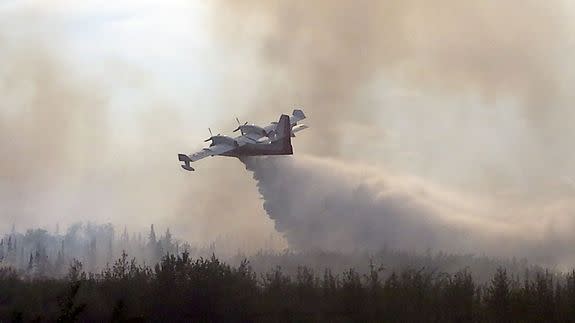Alaska’s heat wave goes from noteworthy to ridiculous with Deadhorse record

Alaska has seen a years-long streak of astonishing warmth, with the warmest year-to-date and warmest June capping it off so far this year.
The heat this week in interior parts of Alaska has been particularly extreme, with one noteworthy all-time high temperature record falling.
SEE ALSO: Global warming's fingerprints are all over recent extreme weather, research shows
Normally, one high temperature record would not be worth calling out, but this one helps demonstrate the rapid changes taking place in the northernmost reaches of the planet, as air and sea temperatures increase, sea ice retreats and snow cover melts earlier each season.
On Wednesday, Deadhorse, Alaska, which is located on the Arctic coast in northern Alaska near the oil port of Prudhoe Bay, reached 85 degrees Fahrenheit, or nearly 29.4 degrees Celsius.
This was the mildest high temperature on record at this location, beating the old record of 83 degrees Fahrenheit.
According to climatologist Brian Brettschneider, this was also the mildest temperature on record in Alaska for anywhere within 50 miles of the Arctic Ocean.
On the same day, the high temperature at New York's Kennedy International Airport was 82 degrees Fahrenheit (though the weather station at Central Park hit exactly 85 degrees).
Deadhorse's record came in context of ridiculously mild streak
The record high in Deadhorse was not the only record set during the past week, the past several months, or even the past few years. More records may fall on Thursday before dramatically cooler air moves into interior Alaska, as the Washington Post reported.
According to climatologist Rick Thoman of the National Weather Service in Anchorage, the state has seen wave after wave of unusually mild conditions for the past three years.
"Three years of silliness!" Thoman said in an email to Mashable.
From January to June of this year, the statewide average temperature was 30.4 degrees Fahrenheit, which was 9 degrees above average. This beat the previous record by 2.5 degrees Fahrenheit, an unusually large margin for such a record to be broken by.

Image: weatherbell analytics
During the winter, Thoman said, there have been more freezing rain events in Fairbanks and Anchorage, and fewer snow events. Following a mild spring and early snowmelt in 2015, the wildfire season was extreme. However, despite the mild weather this spring, Thoman said, this summer is not expected to be as significant a wildfire season as last year was.
Thoman said the impacts of the mild weather have been widespread, from low "or non-existent" sea ice this past winter in coastal southwest Alaska — which hurt the ability of traditional communities to hunt for food — to worsening frost heaves on roadways across the state.

Image: NOAA/NCEI
Some of the unusually mild conditions in Alaska can be blamed on a ridge of high pressure and area of mild ocean temperatures in the northeast Pacific, which many meteorologists nicknamed "The Blob."
That area of mild waters has dissipated, but it has been replaced with weather patterns and oceanic conditions that still favor mild temperature anomalies in Alaska, Thoman said.
The warmth is also connected to manmade climate change, considering that the Arctic as a whole has been warming at about twice the rate of the rest of the world, due to feedback loops that amplify the warming influence from greenhouse gases.
Arctic sea ice extent has plummeted this summer so far, and by September, when the annual sea ice minimum is reached, there may be a new record low.
